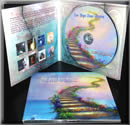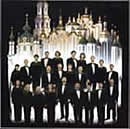Two Steps From Heaven

Classical Crossover

Sacred Choral Music
by Kiev Chamber Choir

Video:
Ukrainian Folk Music
Free Dog Clipart

Classical Crossover

Sacred Choral Music
by Kiev Chamber Choir

Video:
Ukrainian Folk Music
Free Dog Clipart
Russian Orthodox Church Sacred Choral Music on Amazon
ALL ABOUT
AVE MARIA LYRICS
Celine Dion: What Does She Sing?
MOBILE WEBSITE
 DOWNLOAD THIS SONG FOR FREE You won't find this song anywhere on the Internet. CHAPTER 4 : How to record in your home studio Acoustic Guitar Electric Guitar Bass Guitar Piano Brass & Reed Instruments Vocals Drum Kit Brass & Reed Instruments In a recording situation involving brass and reed instruments, you should probably use more than one mic, as there’s typically a lot of movement and activity. A professional player who is used to a studio setting might be able to stay still and work the mic, but a good approach to get consistent dynamics and a full tone is to use multiple mics to balance the sound as the player moves around. The most common approach is to start with a large diaphragm condenser mic about 10–15 inches in front of the bell. If that sounds too harsh, pull it out a little farther. Don’t point the mic directly into the bell, as you might get some wind noise or odd reflectivity back into the mic. Positioning the mic at different angles (start at 45 degrees) can help remove the unwanted artifacts. If your microphone has switchable pickup patterns, set it to a cardioid pattern to begin. You wouldn’t want a hyper-cardioid pattern due to the movement and activity. Set it somewhere between cardioid and omni if your mic has a variable pattern selector. In some cases, if the room sounds great, you might consider putting the mic in omni - you’ll get more of the room sound, which may work for your recording. The tighter the pickup pattern, the more directional the mic will be, and the more focused the sound. If available, a creative approach for a second mic is to put a ribbon microphone above the player, 3–4 feet above the instrument. One quality of a ribbon mic — and a reason they were the goto when recording horns — is a ribbon mic has a way of removing any of the harsh tonal qualities from brass and reed instruments. If you’re in a situation where you only have one mic, move it around the room until you find the sweet spot where you’re getting the best available tone. “In some cases,” says Weiss, “you might not be searching for that perfect tone. You already have your mix, you’re recording a sax solo, and you need it to rip through the mix, so you already know what instruments you need this to sit on top of. Move the mic around the horn to find that sound you need to get the right presence from the sax.” If you’re in a room that’s small or doesn’t have great acoustic control, you’ll probably get a lot of resonant frequencies from a horn or reed instrument. Using some type of baffle in the room or around the mic is one approach to keep the energy concentrated and dampened around the mic. Another tool to aid in recording sax is to use an audio compressor. A saxophone tends to be very dynamic, so the same approach you might use on vocals also works great for smoothing out the dynamics of a sax. |
HOW TO MAKE HOME
|
DOWNLOAD THIS SONG FOR FREE
You won't find this song anywhere on the Internet.
HOW TO MAKE HOME RECORDING STUDIO